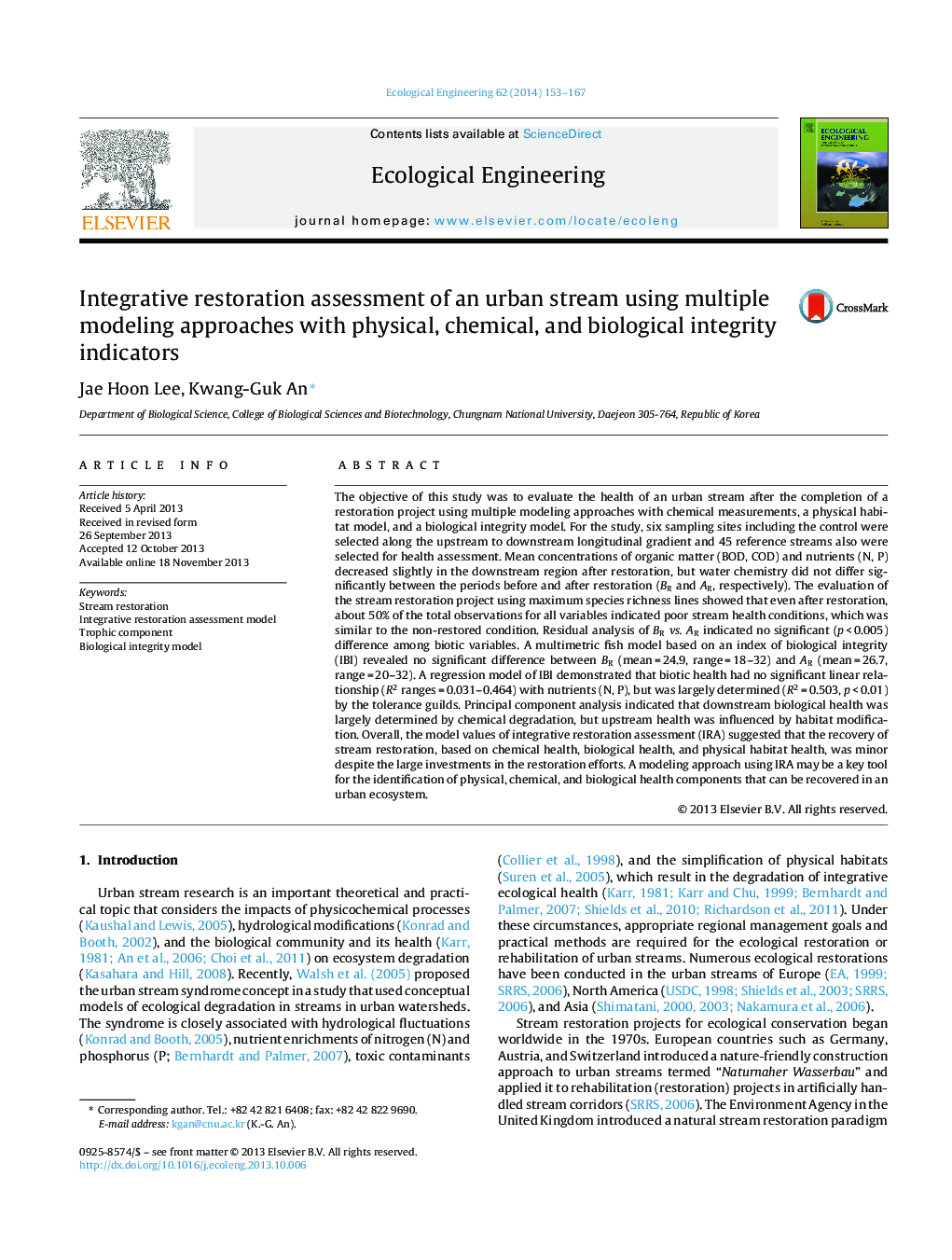| Article ID | Journal | Published Year | Pages | File Type |
|---|---|---|---|---|
| 6302260 | Ecological Engineering | 2014 | 15 Pages |
Abstract
The objective of this study was to evaluate the health of an urban stream after the completion of a restoration project using multiple modeling approaches with chemical measurements, a physical habitat model, and a biological integrity model. For the study, six sampling sites including the control were selected along the upstream to downstream longitudinal gradient and 45 reference streams also were selected for health assessment. Mean concentrations of organic matter (BOD, COD) and nutrients (N, P) decreased slightly in the downstream region after restoration, but water chemistry did not differ significantly between the periods before and after restoration (BR and AR, respectively). The evaluation of the stream restoration project using maximum species richness lines showed that even after restoration, about 50% of the total observations for all variables indicated poor stream health conditions, which was similar to the non-restored condition. Residual analysis of BRvs. AR indicated no significant (p < 0.005) difference among biotic variables. A multimetric fish model based on an index of biological integrity (IBI) revealed no significant difference between BR (mean = 24.9, range = 18-32) and AR (mean = 26.7, range = 20-32). A regression model of IBI demonstrated that biotic health had no significant linear relationship (R2 ranges = 0.031-0.464) with nutrients (N, P), but was largely determined (R2 = 0.503, p < 0.01) by the tolerance guilds. Principal component analysis indicated that downstream biological health was largely determined by chemical degradation, but upstream health was influenced by habitat modification. Overall, the model values of integrative restoration assessment (IRA) suggested that the recovery of stream restoration, based on chemical health, biological health, and physical habitat health, was minor despite the large investments in the restoration efforts. A modeling approach using IRA may be a key tool for the identification of physical, chemical, and biological health components that can be recovered in an urban ecosystem.
Keywords
Related Topics
Life Sciences
Agricultural and Biological Sciences
Ecology, Evolution, Behavior and Systematics
Authors
Jae Hoon Lee, Kwang-Guk An,
